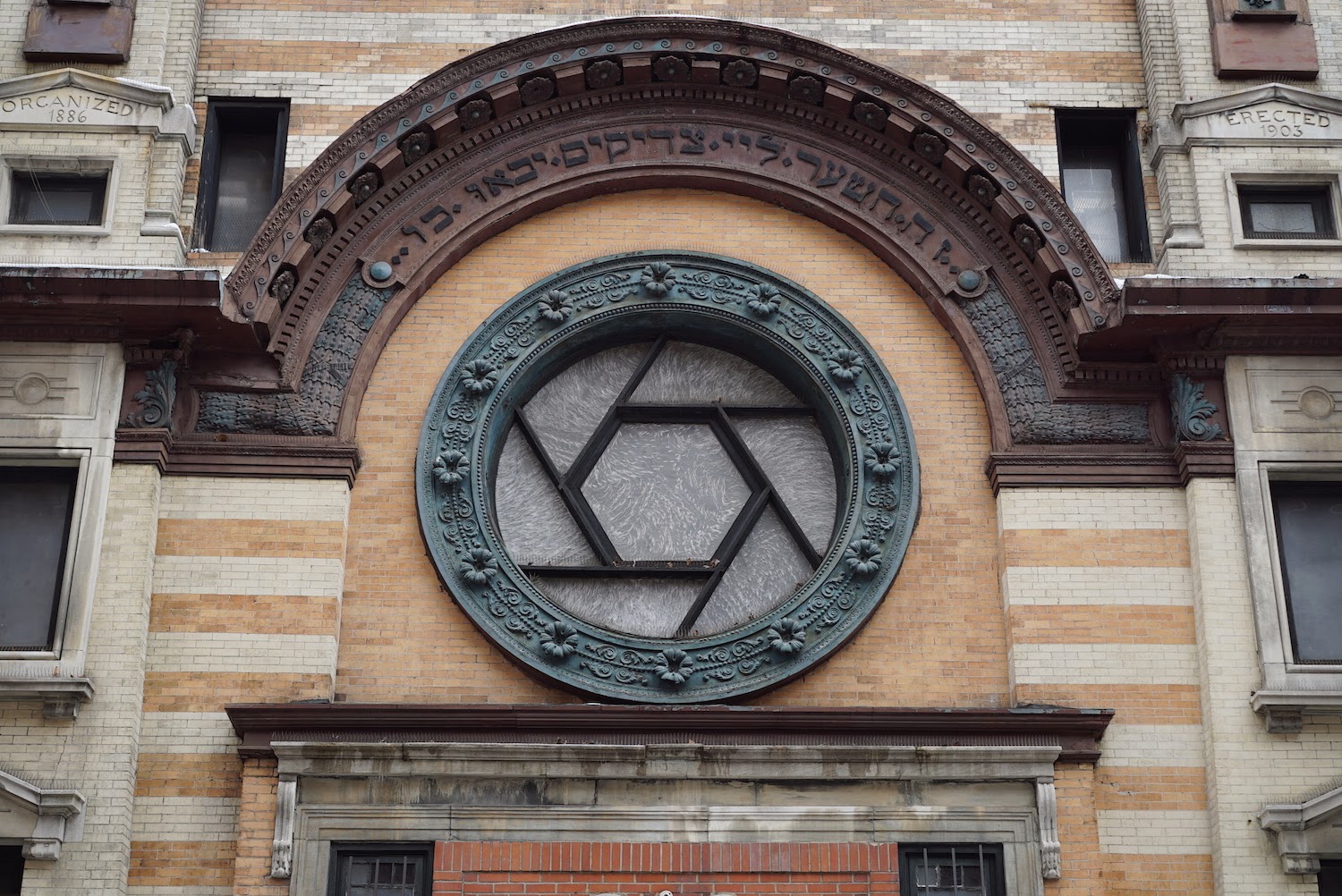One of my favorite places for walking these days is the Lower East Side. What I like is the wonderful mix of things. You find evidence of the past in the old buildings and the remnants of when the area was the center of New York Jewish life, and of all the other immigrant cultures that have passed through. And now you see contemporary manifestations of nightlife, art galleries, high end restaurants, as well as social housing, wholesale clothing stores, and restaurant equipment dealers. There is the touristic "Little Italy", which exists more as a tourist destination than anything else; and, of course, the ever expanding Chinatown. I took a few pictures:
(As always, click to enlarge photos)
Here is the former Kletzer Brotherly Aid Association, set up to help newly immigrated Jews from Kletz, Poland. It is now a Chinese funeral home, but still has the original name on the facade:
A beautiful synagogue facade:
And its peculiar side door:
A Ukrainian Orthodox church:
The Bowery Savings Bank, designed to impress:
Self-portrait with peculiar undergarments:
A primary school gets primary colors, as Jean-Luc Godard would have painted them back in the day:
Always something to see!
On a previous walk, I saw the new Fulton Street subway station, with its geometric ceiling:
It certainly doesn't look like your normal subway station in New York.
But this is what it does:
Calatrava's giant prehistoric beast continues to grow; maybe some day it will be an actual station:
Here it is reflected in a window:
A nearby colorful facade, newly restored:
Thursday, 5 February 2015
More Balanchine
Readers of this blog will know of my fondness for the work of George Balanchine. We went to hear and see a program of three pieces at the New York City Ballet. The first, "Donizetti Variations", was designed by Balanchine as a kind of opening divertissement, set to some fairly generic ballet music from Donizetti's last opera. But with Balanchine, there are always pleasures to be found, even with mediocre music. Some of the subtleties of how he contrasts movement with music were exciting; there were some three part canons in the dance happening while the music was chugging along in some routine fashion. Even the way Balanchine arranges his ensembles is endlessly inventive; in this case, the permutational possibilities of corps of three men and six women (and two soloists) made for always unexpected groupings. There is even a bit of slapstick humor when one of the dancers pretend to hurt her foot.
The last piece on the program "Chaconne", was set to Gluck's music from Orpheus and Eurydice. It has a peculiar shape; it begins with a breathtaking duet, Orpheus and Eurydice seemingly in the underworld, one of the most extraordinary things I have ever seen; after that, there is a long series of celebratory numbers from Gluck's ballet music for the last act. It's the Orpheus story with the happy ending. The structure is both unexpected and borderline incoherent.
The highlight of the evening was a piece set to Ravel's "La Valse" and other Ravel waltzes. Vera really loved it. It was much more dramatic than the other pieces; death makes an appearance. There are some very striking movements for the arms; and eventually the piece climaxes in frenzy of waltzing. I usually don't think about the costumes; but in this case, they contributed a lot to the ballet; skirts that somehow changed colors with the movement.
So why do I like Balanchine so much? There is something about the way he matches movement to music which speaks to me. When I am fully engaged (and the dancers are), I experience the music and the movement as somehow being a single manifestation; escaping the reality that watching bodies move and hearing music in fact two very different kinds of experience, one involving the eyes and the other the ears.
The last piece on the program "Chaconne", was set to Gluck's music from Orpheus and Eurydice. It has a peculiar shape; it begins with a breathtaking duet, Orpheus and Eurydice seemingly in the underworld, one of the most extraordinary things I have ever seen; after that, there is a long series of celebratory numbers from Gluck's ballet music for the last act. It's the Orpheus story with the happy ending. The structure is both unexpected and borderline incoherent.
The highlight of the evening was a piece set to Ravel's "La Valse" and other Ravel waltzes. Vera really loved it. It was much more dramatic than the other pieces; death makes an appearance. There are some very striking movements for the arms; and eventually the piece climaxes in frenzy of waltzing. I usually don't think about the costumes; but in this case, they contributed a lot to the ballet; skirts that somehow changed colors with the movement.
So why do I like Balanchine so much? There is something about the way he matches movement to music which speaks to me. When I am fully engaged (and the dancers are), I experience the music and the movement as somehow being a single manifestation; escaping the reality that watching bodies move and hearing music in fact two very different kinds of experience, one involving the eyes and the other the ears.
Subscribe to:
Comments (Atom)















